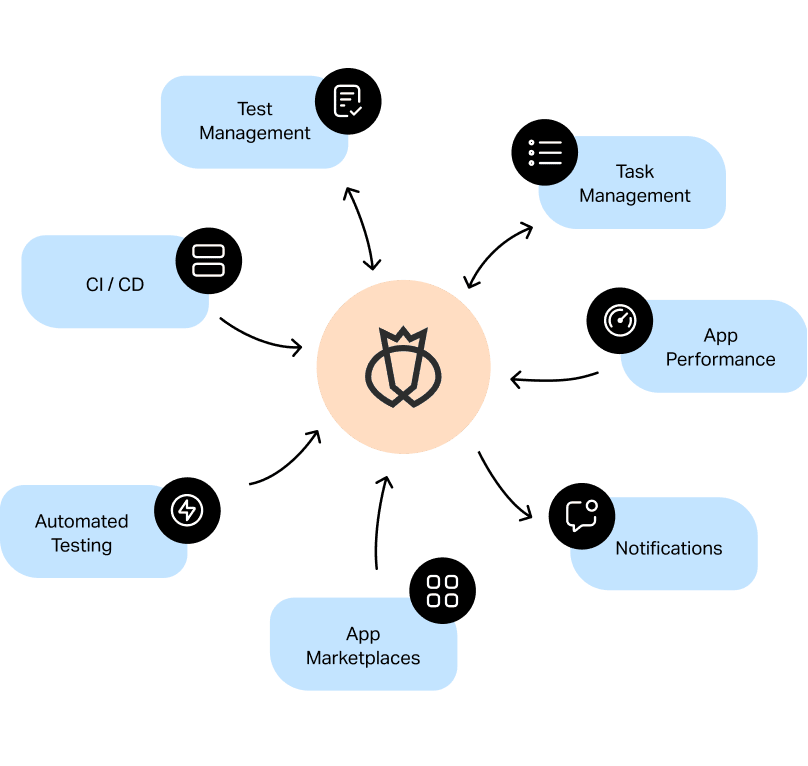Discovering the Future of Automation Testing in Software Program Advancement
Discovering the Future of Automation Testing in Software Program Advancement
Blog Article
From Handbook to Automated Testing: A Comprehensive Overview to Transitioning Efficiently and Successfully
In the realm of software screening, the shift from guidebook to automated procedures has actually ended up being a progressively essential transition for companies seeking to boost efficiency and precision in their screening techniques. The journey from guidebook to automated screening is not without its obstacles, but when approached strategically and with a clear plan in mind, the benefits can be significant.
Advantages of Automated Testing
Automated screening provides various benefits, boosting performance and accuracy in software application development procedures. One key advantage is the considerable reduction in screening time. Automated examinations can be run at the same time on several devices and running systems, considerably speeding up the testing phase compared to manual screening. This increased efficiency enables faster responses on the top quality of the software, enabling programmers to identify and deal with concerns immediately.
In addition, automated testing ensures a greater level of precision in identifying issues. Consistency in screening is likewise enhanced, as automated examinations execute the very same actions exactly each time they are run.
Picking the Right Devices

Firstly, assess your demands and objectives. Recognize the extent of your project, the modern technologies included, and the ability collection of your group. This evaluation will help you determine the functions and capacities you need in your testing tools.
Secondly, take into consideration the compatibility of the tools with your existing procedures and systems. Seamless assimilation with your existing software application advancement lifecycle is vital to make sure a smooth transition to automation.
In addition, review the scalability and flexibility of the devices. As your screening needs progress, the tools must have the ability to adapt and accommodate adjustments successfully.
Last but not least, consider the support and community around the devices. Robust assistance and an energetic individual community can offer important resources and support when carrying out automated screening. By carefully considering these facets, you can select the right tools that straighten with your demands and established the phase for an effective shift to automated testing.
Composing Efficient Test Manuscripts

When crafting examination manuscripts, it is necessary to take into consideration the particular needs of the software application being checked and ensure that the scripts resolve all crucial performances. Clear and detailed calling conventions for examination manuscripts and test instances can boost readability and maintainability. In addition, including error handling systems within the examination scripts can aid in identifying and attending to concerns immediately.
Additionally, organizing test scripts right into modular components can improve reusability and scalability, decreasing redundancy and improving efficiency in test script maintenance. Regular evaluations and updates to examine scripts are critical to equal developing software application needs and functionalities. By complying with these concepts, testers can produce robust and efficient examination scripts that add considerably to the success of automated testing procedures.
Integrating Automation Into Workflows
By effortlessly incorporating automated testing tools like Selenium or Appium into the software program growth lifecycle, teams can accomplish faster responses on code adjustments, leading to quicker pest detection and resolution. This assimilation allows for continuous screening throughout the advancement procedure, making sure that any type of problems are determined early on, resulting in greater software top quality. Proper integration of automation tools requires cooperation between advancement, testing, and procedures teams to establish a unified operations try here that optimizes efficiency and efficiency in delivering high-quality software program products.
Guaranteeing a Smooth Change
Effectively transitioning to automated testing entails thorough planning and mindful implementation to optimize and lessen disruptions performance in the software program growth process - automation testing. To make sure a smooth shift, it is necessary to begin by performing a thorough assessment of the present testing processes and identifying locations where automation can bring one of the most considerable advantages. Engaging with all stakeholders early on while doing so, consisting of developers, testers, and task supervisors, is critical for garnering assistance and buy-in for the automation campaign
Interaction is key during this transition stage. Clear communication of the goals, advantages, and assumptions of automated testing assists to handle any type of resistance or concerns that may emerge. In addition, offering appropriate training and sources for staff member to upskill in automation tools and methods is important for making certain a successful transition.
Conclusion
In verdict, transitioning from manual to automated testing supplies countless benefits, consisting of raised efficiency and integrity. By choosing the appropriate tools, writing reliable examination scripts, and integrating automation perfectly into workflows, organizations can make certain a effective and smooth change. It is important to accept automation as a valuable property in software program screening procedures to enhance overall quality and productivity.
In the realm of software screening, the change from handbook to automated processes has actually ended up being a significantly vital change for companies looking for to boost performance and accuracy in their testing practices. Automated examinations can be run at the same time on several gadgets and running systems, significantly pop over to this site speeding up the testing stage compared to manual screening. Uniformity in testing is also pop over to this site boosted, as automated tests execute the very same actions specifically each time they are run.To make certain the effective application of chosen testing tools, the creation of effective examination manuscripts plays an important duty in confirming the capability and efficiency of automated processes - automation testing. By complying with these principles, testers can produce durable and reliable examination scripts that add considerably to the success of automated screening procedures
Report this page